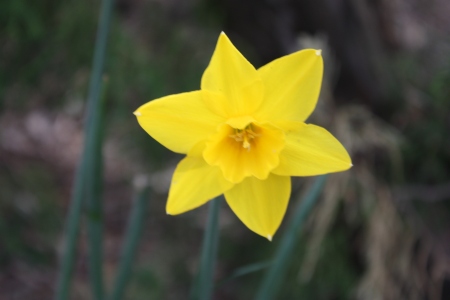I am often asked about how to eliminate certain pests from the garden, such as moles and grubs. This month’s post was contributed by a fellow blogger who has some knowledge about this very issue. Here are some helpful tips.
What this article addresses:
- How do I eliminate grubs and moles?
- How do I detect the presence of moles in his garden?
- What are some humane techniques to remove moles?
- When should I call a professional to eliminate moles?
- What are some tips to deter moles from your garden?
Moles and grubs are the nightmare of beautiful gardens and perfect turf. An underground rodent, moles dig tunnels under the ground, forming mounds on the surface. Grubs live in the soil and feed on the roots of plants. Even if moles and grubs are not a direct nuisance to you, they can reap havoc on a garden.
How to Get Rid of Grubs:
Grubs are the larva of insects, especially Japanese beetle. This time of the year, grubs are found under soil surfaces, and feed on the roots of your lawn and landscape plants. Grubs are also a food source for moles; therefore, eliminating one pest can deter another.

Grub Removal Methods:
Milky Spore: Milky Spore is a bacterium, (Bacillus popillae), which is lethal to grubs of Japanese beetles. It is available in powdered form, and it works better when applied during late summer periods.
Nematodes: Beneficial nematodes (roundworms) are the natural predators of the microscopic world. One pouch of nematodes attached to a spray hose can be used to water your lawn and garden to kill grubs. It is most effective when applied after the soil heats up in the spring. Keep the lawn watered to allow the beneficial nematodes to work.
Note: Killing off grubs reduces the food source for moles and helps your lawn, but it does not guarantee that the moles will move on.
Detecting Moles in The Garden: Mounds of soil visible around the garden, with soil collapsing partially in some places are signs that a mole is present. Before declaring war on this small mammal, wait a few days to see if the animal persists. Moles are known to feed mainly on grubs and earthworms, so if your garden is poorly supplied with food, the invader will quickly leave your property once it discovers there is nothing desirable to eat.

If more molehills become evident, you can make the decision to chase these rodents from your garden. There are several ways of accomplishing this, many which can be found in stores or on the Internet, including traps, firecrackers, natural solutions and ultrasound. Some of these techniques are easy to implement.
How to Get Rid of Moles Naturally:
Once you have made the decision to get rid of the moles that disrupt your garden, you can choose one or more methods to deter them. Always consider respecting the environment and avoid inflicting bitter injury to these animals whenever possible.
Technique 1: Deterring Moles
Use Plants that Repel Moles: Some plants are noted to repel moles. Marigolds and some flowering bulbs such as onion, garlic, crown imperial lily, hyacinth, daffodil, or Castor bean can keep intruders at a distance thanks to their aroma. Place these plants into mole hills to help repel the unwanted visitors.
Anti-Mole Ultrasound: There are commercially available solar powered boxes emitting ultrasonic vibrations that are inaudible to humans but will disturb the hearing of moles. Some also produce vibrations. These anti-mole ultrasounds offer the advantage of removing many kinds of rodents. Remember to place these devices in different places wherever there is evidence of moles. These ultrasound boxes are commercially available, at between 20 and 40 dollars, depending on the model.
Stick and plastic bottle method: This simple technique has proven to be quite successful according to user feedback. Place a stick into the molehill and cover it with a plastic bottle, neck down. When the wind blows it will bang on the stick and produce vibrations that moles dislike. With the constant annoyance, your mole visitor may very well become disgruntled and move on. This well known tip does have its disadvantages (such as aesthetics) but with its simplicity of installation and success rate it is certainly worth a try! A similar method, the use of pin wheels placed near a mole hole, have also proven to be a successful approach.
Technique 2: Mole Elimination
If all else fails, metal traps are available in different styles. Before handling, wear a pair of gloves to avoid leaving a human smell on the trap. Locate the most recent molehill and arm the trap with a tension rod or wrench. Carefully cover the hole and mark the location. This method has proven successful at a low cost. Tunnel Mole Traps are designed for humane mole capture with two doors that only swing inwards to let the mole in but not out. After catching the mole unharmed, it can be released into another location in the wild. Simply bury the trap in the mole tunnel or hill and let the device do its work.
When to Contact a Professional:
The call to a professional may be the last resort if you cannot get rid of the moles on your own. This expert is perfectly equipped to hunt for and eliminate moles in your garden. Cost depends on distance traveled and materials used.
Author Bio:Vicki J. Stabile is a gardening enthusiast, involved in gardening at her home’s backyard for the past five years. Vicki loves to share her gardening knowledge with others through her blog, Patio Clinic.

















You must be logged in to post a comment.